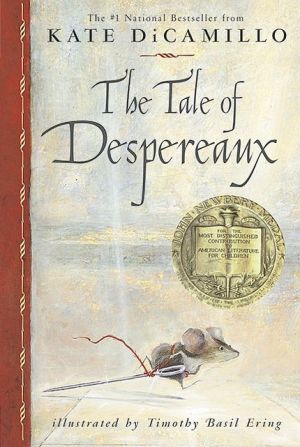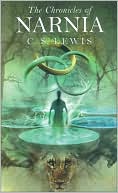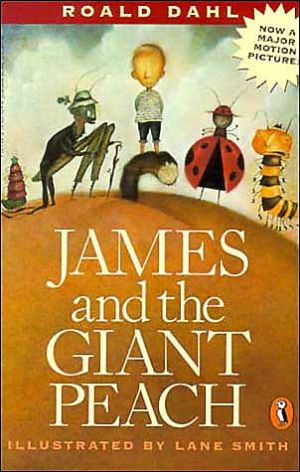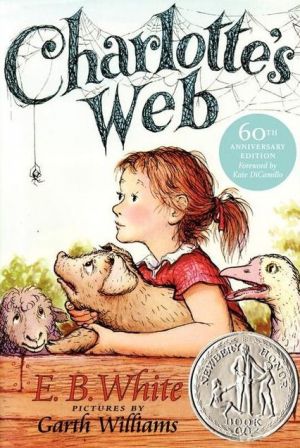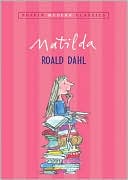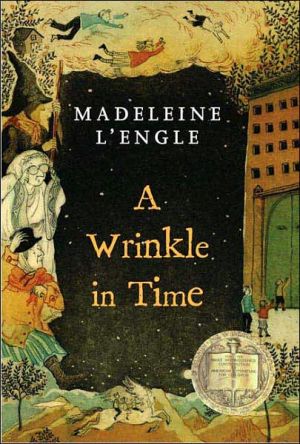The Tale of Despereaux
"Forgiveness, light, love, and soup. These essential ingredients combine into a tale that is as soul-stirring as it is delicious." — BOOKLIST (starred review)\ Welcome to the story of Despereaux Tilling, a mouse who is in love with music, stories, and a princess named Pea. It is also the story of a rat called Roscuro, who lives in the darkness and covets a world filled with light. And it is the story of Miggery Sow, a slow-witted serving girl who harbors a simple, impossible wish. These three...
Search in google:
"Forgiveness, light, love, and soup. These essential ingredients combine into a tale that is as soul-stirring as it is delicious." — BOOKLIST (starred review)Welcome to the story of Despereaux Tilling, a mouse who is in love with music, stories, and a princess named Pea. It is also the story of a rat called Roscuro, who lives in the darkness and covets a world filled with light. And it is the story of Miggery Sow, a slow-witted serving girl who harbors a simple, impossible wish. These three characters are about to embark on a journey that will lead them down into a horrible dungeon, up into a glittering castle, and, ultimately, into each other's lives. What happens then? As Kate DiCamillo would say: Reader, it is your destiny to find out. From the master storyteller who brought us BECAUSE OF WINN-DIXIE comes another classic, a fairy tale full of quirky, unforgettable characters, with twenty-four stunning black-and-white illustrations by Timothy Basil Ering. This paperback edition pays tribute to the book's classicdesign, featuring a rough front and elegant gold stamping.The New York Times… a terrific, bravura performance. — Jerry Griswold
CHAPTER ONE: THE LAST ONE\ This story begins within the walls of a castle, with the birth of a mouse. A small mouse. The last mouse born to his parents and the only one of his litter to be born alive.\ "Where are my babies?" said the exhausted mother when the ordeal was through. "Show to me my babies."\ The father mouse held the one small mouse up high.\ "There is only this one," he said. "The others are dead."\ "Mon Dieu, just the one mouse baby?"\ "Just the one. Will you name him?"\ "All of that work for nothing," said the mother. She sighed. "It is so sad. It is such the disappointment." She was a French mouse who had arrived at the castle long ago in the luggage of a visiting French diplomat. "Disappointment" was one of her favorite words. She used it often.\ "Will you name him?" repeated the father.\ "Will I name him? Will I name him? Of course, I will name him, but he will only die like the others. Oh, so sad. Oh, such the tragedy."\ The mouse mother held a handkerchief to her nose and then waved it in front of her face. She sniffed. "I will name him. Yes. I will name this mouse Despereaux, for all the sadness, for the many despairs in this place. Now, where is my mirror?"\ Her husband handed her a small shard of mirror. The mouse mother, whose name was Antoinette, looked at her reflection and gasped aloud. "Toulèse," she said to one of her sons, "get for me my makeup bag. My eyes are a fright."\ While Antoinette touched up her eye makeup, the mouse father put Despereaux down on a bed made of blanket scraps. The April sun, weak but determined, shone through a castle window and from there squeezed itself through a small hole in the wall and placed one golden finger on the little mouse.\ The other, older mice children gathered around to stare at Despereaux.\ "His ears are too big," said his sister Merlot. "Those are the biggest ears I've ever seen."\ "Look," said a brother named Furlough, "his eyes are open. Pa, his eyes are open. They shouldn't be open."\ It is true. Despereaux's eyes should not have been open. But they were. He was staring at the sun reflecting off his mother's mirror. The light was shining onto the ceiling in an oval of brilliance, and he was smiling up at the sight.\ "There's something wrong with him," said the father. "Leave him alone."\ Despereaux's brothers and sisters stepped back, away from the new mouse.\ "This is the last," proclaimed Antoinette from her bed. "I will have no more mice babies. They are such the disappointment. They are hard on my beauty. They ruin, for me, my looks. This is the last one. No more."\ "The last one," said the father. "And he'll be dead soon. He can't live. Not with his eyes open like that."\ But, reader, he did live.\ This is his story.\ ______\ THE TALE OF DESPEREAUX by Kate DiCamillo, illustrated by Timothy Basil Ering. Text copyright (c) 2006 by Kate DiCamillo. Published by Candlewick Press, Inc., Cambridge, MA.
\ From Barnes & NobleThe Barnes & Noble Review\ Winner of the 2004 Newbery Medal, this superbly suspenseful tale of a little mouse with big aspirations comes from Kate DiCamillo, author of another Newbery Honor book, Because of Winn-Dixie. \ In lilting storytelling language reminiscent of fairy tales of old, DiCamillo spins the yarn of Despereaux Tilling, a literate mouse who lives by a different code and happens to fall in love with a real princess. Despereaux is anxious to profess his love, but when he tells his community of his dreams, he gets banished into the dark dungeon where mice never leave. Adjacent to Despereaux's dilemma is the story of a rat named Chiaroscuro, ruthless in personality and in love with making his way toward light. When these two characters eventually collide -- along with Miggery Sow, a down-and-out servant who aims to become a princess of her own -- the result is a heroic, surprising heartwarmer that brings families together, gives hope to underdogs everywhere, and teems with justice.\ Outdoing herself with this simply told yet marvelously complex tale, DiCamillo provides readers with a hero to savor. Timothy Basil Ering's illustrations provide just the right personality to the text, which beckons to be read and reread, even aloud. One fanciful tale to sink your teeth into. Matt Warner\ \ \ \ \ \ The New York Times… a terrific, bravura performance. — Jerry Griswold\ \ \ Publishers WeeklyThe author of Because of Winn-Dixie and The Tiger Rising here shifts gears, demonstrating her versatility while once again proving her genius for mining the universal themes of childhood. Her third novel calls to mind Henry Fielding's Tom Jones; DiCamillo's omniscient narrator assumes a similarly irreverent yet compassionate tone and also addresses readers directly. Despereaux, the diminutive mouse hero ("The last mouse born to his parents and the only one of his litter to be born alive"), cares not a whit for such mundane matters as scurrying or nibbling, and disappoints his family at every turn. When his sister tries to teach him to devour a book, for example ("This glue, here, is tasty, and the paper edges are crunchy and yummy, like so"), Despereaux discovers instead "a delicious and wonderful phrase: Once upon a time"-a discovery that will change his life. The author introduces all of the elements of the subtitle, masterfully linking them without overlap. A key factor unmentioned in the subtitle is a villainous rat, Chiaroscuro (dwelling in the darkness of the Princess's dungeon, but drawn to the light). Ering (The Story of Frog Belly Rat Bone) brings an understated drama to the black-and-white illustrations that punctuate each chapter. His artwork conveys a respect for the characters even as they emit the wry humor of the narrator's voice. The teller of the tale roots for the hero and thus aligns himself with the audience: "Reader, you must know that an interesting fate (sometimes involving rats, sometimes not) awaits almost everyone, mouse or man, who does not conform." In addition to these life lessons, the narrator also savors a pointer or two about language (after the use of the word "perfidy," the narrator asks, "Reader, do you know what `perfidy' means? I have a feeling you do, based on the little scene that has just unfolded here. But you should look up the word in your dictionary, just to be sure"). Reader, I will let you imagine, for now, how these witticisms of our omniscient narrator come into play; but I must tell you, you are in for a treat. Ages 7-12. (Sept.) Copyright 2003 Reed Business Information.\ \ \ \ \ VOYADespereaux is the smallest mouse in the castle, with the largest ears and the most romantic heart. He falls in love with the human Princess Pea and is banished to the dungeon by his fellow mice. Meanwhile, the rat Chiaroscuro falls in love with light. When he leaves the dungeon to pursue his love, he frightens the queen to death and ends up back where he started with a healthy grudge against Princess Pea. Out in the town, a girl the same age as the princess, named Miggery Sow, is sold into slavery by her father. She takes many nasty beatings but dreams of being a princess herself one day. All three stories entwine in the final part of the book in a satisfying and not surprisingly happy ending for nearly everyone. At times, DiCamillo's new fantasy novel is charming, by turns sad, sweet, and mildly scary. At other times, though, the conceit of the narrator addressing the reader directly wears thin. The characters are all well limned, although the princess is, perhaps, too perfect. The story's twists and intertwinings are all believable, but each character is given their own "book" within the novel, and the pacing is thrown off. First Despereaux's story is told to a point. Then Chiaroscuro's story is told to a point. Then Miggery's story is told to a point. Finally, they all come together. Although this story would make an excellent read aloud for the young, most young adults will likely feel that the narration is condescending. VOYA Codes: 4Q 3P M (Better than most, marred only by occasional lapses; Will appeal with pushing; Middle School, defined as grades 6 to 8). 2003, Candlewick, 272p, \ — Timothy Capehart\ \ \ \ \ Children's LiteratureIn 2000 Kate DiCamillo got the Newbery Honor award for Because of Winn-Dixie (Candlewick, $5.99, ages 9-12), the story of a lonely young girl who finds sense of community because of a dog who discovers her. This year DiCamillo captured the Newbery itself with the help of an extraordinary character, Despereaux, the winning hero of The Tale of Despereaux: Being the Story of a Mouse, a Princess, Some Soup and a Spool of Thread. He's a tiny mouse with a huge heart who loves a princess and would do anything for her. But he's not the only unique character, the book is divided between other remarkable personalities and their engaging stories. There's Roscuro, a dungeon-born rat who seeks light, Miggery Sow, a slow-witted serving girl who only wants to be listened to, and the Princess herself, who still grieves for her mother. Each character's desires, hopes and fears combine in this marvelous questing fantasy. This is a tale made for reading aloud and family enjoyment. If reading aloud is not your forte, there's a wonderful recording by Graeme Malcolm (Listening Library, $25.00, unabridged, 3 cassettes). 2003, Candlewick, Ages 8 to 12. \ — Susie Wilde\ \ \ \ \ School Library JournalGr 3 Up-A charming story of unlikely heroes whose destinies entwine to bring about a joyful resolution. Foremost is Despereaux, a diminutive mouse who, as depicted in Ering's pencil drawings, is one of the most endearing of his ilk ever to appear in children's books. His mother, who is French, declares him to be "such the disappointment" at his birth and the rest of his family seems to agree that he is very odd: his ears are too big and his eyes open far too soon and they all expect him to die quickly. Of course, he doesn't. Then there is the human Princess Pea, with whom Despereaux falls deeply (one might say desperately) in love. She appreciates him despite her father's prejudice against rodents. Next is Roscuro, a rat with an uncharacteristic love of light and soup. Both these predilections get him into trouble. And finally, there is Miggery Sow, a peasant girl so dim that she believes she can become a princess. With a masterful hand, DiCamillo weaves four story lines together in a witty, suspenseful narrative that begs to be read aloud. In her authorial asides, she hearkens back to literary traditions as old as those used by Henry Fielding. In her observations of the political machinations and follies of rodent and human societies, she reminds adult readers of George Orwell. But the unpredictable twists of plot, the fanciful characterizations, and the sweetness of tone are DiCamillo's own. This expanded fairy tale is entertaining, heartening, and, above all, great fun.-Miriam Lang Budin, Chappaqua Public Library, NY Copyright 2003 Reed Business Information.\ \ \ \ \ Kirkus ReviewsDear reader, light your lamp and listen to the tale of Despereaux, the last mouse born of Antoinette. Born with his eyes open and ears much too large, Despereaux seems destined for early death. A true Renaissance mouse, he can hear honey, read words, and appreciate fine music. But he cannot conform to the strictures of the mouse world. Rodents and humans don't mix, yet he falls in love with the Princess Pea, earning the wrath of all the mice in the castle. The melodramatic voice of the narrator glides through DiCamillo's entirely pleasing tale, at times addressing the reader directly, at others, moving the reader back and forward in time. Never does she abandon the reader in the dungeon with Despereaux, the dark-hearted rats, or the guard and fellow inmate, Gregory. And so unwinds a tale with twists and turns, full of forbidden soup and ladles, rats lusting for mouse blood, a servant who wishes to be a princess, a knight in shining-or, at least, furry-armor, and all the ingredients of an old-fashioned drama. (Fiction. 7-12)\ \
